 EDITOR'S PICK
EDITOR'S PICK
Bristow Norway Receives First Beta Alia CX300 Electric Aircraft
13 Aug 2025 | Synopsis
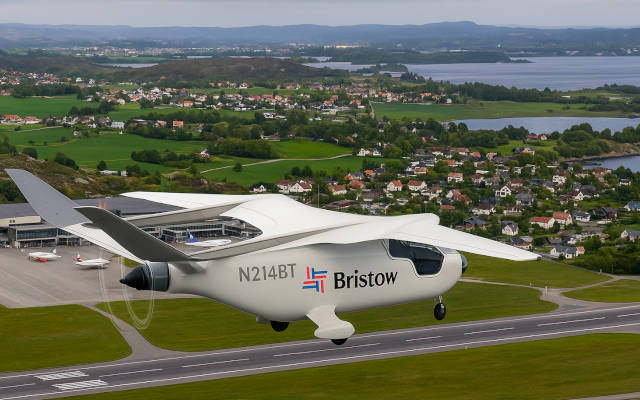 Bristow Norway received the first Beta Alia CX300 electric aircraft at Stavanger Airport. The conventional takeoff and landing (CTOL) version of the electric aircraft will undergo a six-month evaluation with Avinor and CAA Norway, testing regional routes like Stavanger–Bergen. It carries five passengers or 1,400 lbs of cargo over 300+ nautical miles. Bristow pilots trained in Vermont will operate it, marking a key step toward sustainable aviation.
Bristow Norway received the first Beta Alia CX300 electric aircraft at Stavanger Airport. The conventional takeoff and landing (CTOL) version of the electric aircraft will undergo a six-month evaluation with Avinor and CAA Norway, testing regional routes like Stavanger–Bergen. It carries five passengers or 1,400 lbs of cargo over 300+ nautical miles. Bristow pilots trained in Vermont will operate it, marking a key step toward sustainable aviation.The FIrst EV Powered By A Semi-Solid-State Battery Has Been Cleared For Sale
13 Aug 2025 | Synopsis
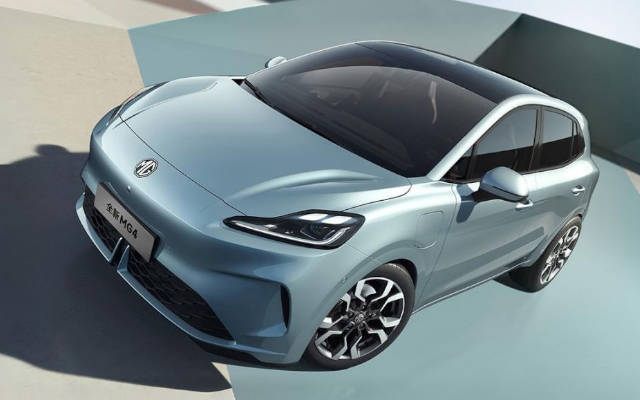 Offering enhanced safety and energy density, as well as faster charging, the new SAIC MG4 has been official cleared for sale in China, marking the first EV anywhere to be equipped with semi-solid-state batteries. Starting at projected 73,000 Yuan ($10,000USD), it is sized comparable to BYD Dolphin and offers driving range for the base trim level of 272 miles, 330 for top trim level. Sales will commence in September 2025.
Offering enhanced safety and energy density, as well as faster charging, the new SAIC MG4 has been official cleared for sale in China, marking the first EV anywhere to be equipped with semi-solid-state batteries. Starting at projected 73,000 Yuan ($10,000USD), it is sized comparable to BYD Dolphin and offers driving range for the base trim level of 272 miles, 330 for top trim level. Sales will commence in September 2025.The Polestar 3 Just Shattered Range Estimates With A Record-Breaking 580+ Mile Drive
13 Aug 2025 | Synopsis
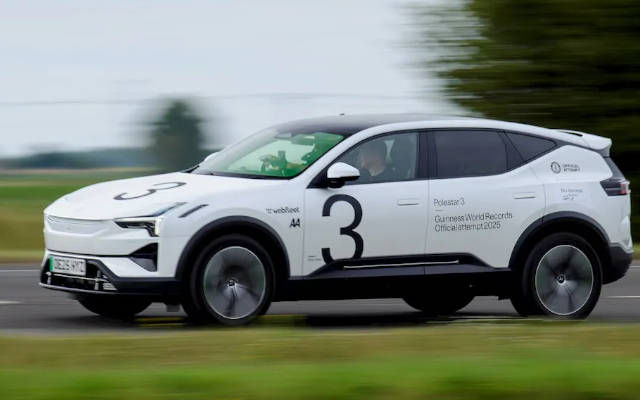 The Polestar 3 electric SUV smashed expectations, driving 581.3 miles (935 km) on public UK roads over nearly 23 hours—averaging 25 mph—and setting a Guinness World Record for longest distance by an EV SUV. The unmodified Long‑Range Single‑Motor model still had 20% battery remaining. Three drivers rotated every three hours, navigating with standard 20‑inch wheels and Michelin Sport 4 EV tires, demonstrating real-world EV endurance.
The Polestar 3 electric SUV smashed expectations, driving 581.3 miles (935 km) on public UK roads over nearly 23 hours—averaging 25 mph—and setting a Guinness World Record for longest distance by an EV SUV. The unmodified Long‑Range Single‑Motor model still had 20% battery remaining. Three drivers rotated every three hours, navigating with standard 20‑inch wheels and Michelin Sport 4 EV tires, demonstrating real-world EV endurance.Swiss Pilot Surpasses Solar-Powered Plane Altitude Record of 31,234 MSL
13 Aug 2025 | Synopsis
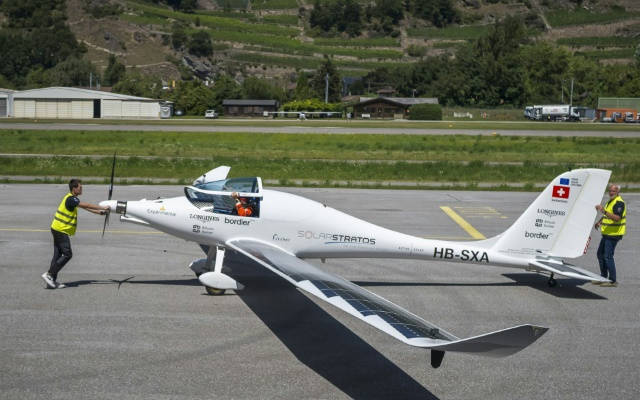 Swiss pilot Raphaël Domjan flew the solar-powered SolarStratos to 9,521 m (31,234 ft), breaking the manned electric flight altitude mark set in 2010 by Andre Borschberg in Solar Impulse (9,235 m). Taking advantage of warm air thermals, the 5hr 9min flight originating in Sion, Switzerland required oxygen at altitude and braved –50 °C to –70 °C temperatures. The flight record awaits official certification. Next goal: 10,000 meters.
Swiss pilot Raphaël Domjan flew the solar-powered SolarStratos to 9,521 m (31,234 ft), breaking the manned electric flight altitude mark set in 2010 by Andre Borschberg in Solar Impulse (9,235 m). Taking advantage of warm air thermals, the 5hr 9min flight originating in Sion, Switzerland required oxygen at altitude and braved –50 °C to –70 °C temperatures. The flight record awaits official certification. Next goal: 10,000 meters.GM Bets on CATL LFP Batteries for New Bolt EV: What It Means for Safety and Cost
13 Aug 2025 | Synopsis
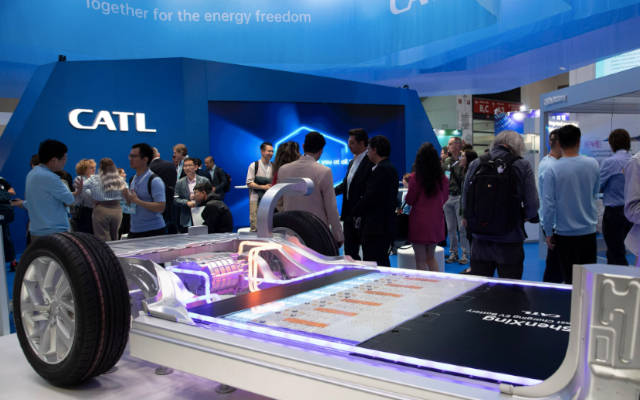 GM will use CATL's LFP batteries for the 2027 Chevy Bolt to cut costs and improve safety, meeting China’s GB 38031-2025 standard. LG will begin domestic LFP production in Michigan by 2027. Trump-era tariffs on Chinese batteries - up to 80% - will raise short-term costs, but GM sees temporary imports as viable. The Bolt will offer 300+ miles of range and Tesla-style charging.
GM will use CATL's LFP batteries for the 2027 Chevy Bolt to cut costs and improve safety, meeting China’s GB 38031-2025 standard. LG will begin domestic LFP production in Michigan by 2027. Trump-era tariffs on Chinese batteries - up to 80% - will raise short-term costs, but GM sees temporary imports as viable. The Bolt will offer 300+ miles of range and Tesla-style charging.
 Si Exclusive
Si Exclusive
Hydrogen's Flight Path: Fuel Cells, Turbines, and the Economics of Clean Aviation
10 Oct 2025 |  Aviation is shifting from Jet A to four fuel systems: electricity, hydrogen (fuel cell and combustion), SAF, and petroleum. Fuel cells suit short-haul aircraft; hydrogen combustion may power long-range jets. SAF bridges legacy fleets. Hydrogen costs - $5-$7/kg today, possibly $2/kg by 2040 - impact ticket prices and infrastructure decisions. Airport authorities, airlines, and governments will share deployment costs. Each fuel has distinct environmental pros and cons shaping aviation's net-zero future.
Aviation is shifting from Jet A to four fuel systems: electricity, hydrogen (fuel cell and combustion), SAF, and petroleum. Fuel cells suit short-haul aircraft; hydrogen combustion may power long-range jets. SAF bridges legacy fleets. Hydrogen costs - $5-$7/kg today, possibly $2/kg by 2040 - impact ticket prices and infrastructure decisions. Airport authorities, airlines, and governments will share deployment costs. Each fuel has distinct environmental pros and cons shaping aviation's net-zero future.
 10 Oct 2025 23:11:25 UTC |
RECENT PODCASTS
BYD Soars - Cheaper Tesla Models - The Bolt is Back - Rivian
SEARCH RSSTREAM
 53 New Postings In Past 24 Hours
53 New Postings In Past 24 Hours
Category:finance
Region:NoAmerica
Date:10 Oct 2025
Category:policy
Region:NoAmerica
Date:10 Oct 2025
Category:mobility
Region:AsiaPacific
Date:10 Oct 2025
Category:mobility
Region:AsiaPacific
Date:10 Oct 2025
Category:finance
Region:NoAmerica
Date:10 Oct 2025
Category:finance
Region:IndoAsia
Date:10 Oct 2025
Category:energy
Region:Global
Date:10 Oct 2025
Category:energy
Region:NoAmerica
Date:10 Oct 2025
Category:finance
Region:NoAmerica
Date:10 Oct 2025
Category:finance
Region:Global
Date:10 Oct 2025